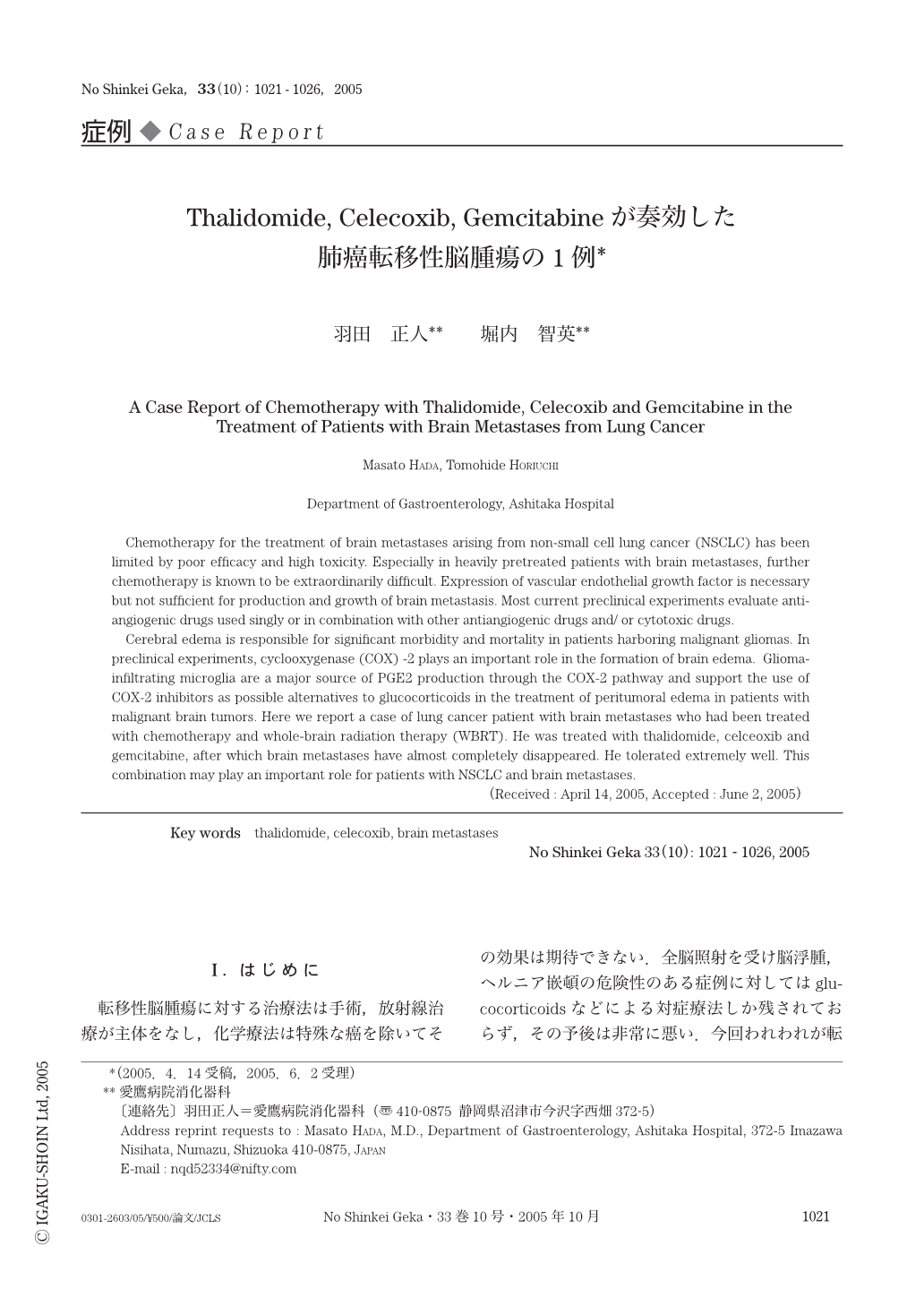Japanese
English
- 有料閲覧
- Abstract 文献概要
- 1ページ目 Look Inside
- 参考文献 Reference
Ⅰ.はじめに
転移性脳腫瘍に対する治療法は手術,放射線治療が主体をなし,化学療法は特殊な癌を除いてその効果は期待できない.全脳照射を受け脳浮腫,ヘルニア嵌頓の危険性のある症例に対してはglucocorticoidsなどによる対症療法しか残されておらず,その予後は非常に悪い.今回われわれが転移性脳腫瘍の治療に使用したthalidomideは免疫調節剤に分類される薬剤で,抗VEGF,抗TNF-α等の作用を有し強力な血管新生抑制作用を示す.一方celecoxibは選択的cyclooxygenase(COX)-2阻害剤で,prostaglandin(PG)E2の産生を抑制することで脳関門の透過性を低下させ脳浮腫治療の可能性が報告されている.
われわれは重篤な肺癌脳転移症例にthalidomide,celecoxibおよびgemcitabineを使用し救命,転移巣の縮小を得た1例を経験したので報告する.
Chemotherapy for the treatment of brain metastases arising from non-small cell lung cancer (NSCLC) has been limited by poor efficacy and high toxicity. Especially in heavily pretreated patients with brain metastases,further chemotherapy is known to be extraordinarily difficult. Expression of vascular endothelial growth factor is necessary but not sufficient for production and growth of brain metastasis. Most current preclinical experiments evaluate antiangiogenic drugs used singly or in combination with other antiangiogenic drugs and/ or cytotoxic drugs.
Cerebral edema is responsible for significant morbidity and mortality in patients harboring malignant gliomas. In preclinical experiments,cyclooxygenase (COX) -2 plays an important role in the formation of brain edema. Glioma-infiltrating microglia are a major source of PGE2 production through the COX-2 pathway and support the use of COX-2 inhibitors as possible alternatives to glucocorticoids in the treatment of peritumoral edema in patients with malignant brain tumors. Here we report a case of lung cancer patient with brain metastases who had been treated with chemotherapy and whole-brain radiation therapy (WBRT). He was treated with thalidomide,celceoxib and gemcitabine,after which brain metastases have almost completely disappeared. He tolerated extremely well. This combination may play an important role for patients with NSCLC and brain metastases.

Copyright © 2005, Igaku-Shoin Ltd. All rights reserved.


